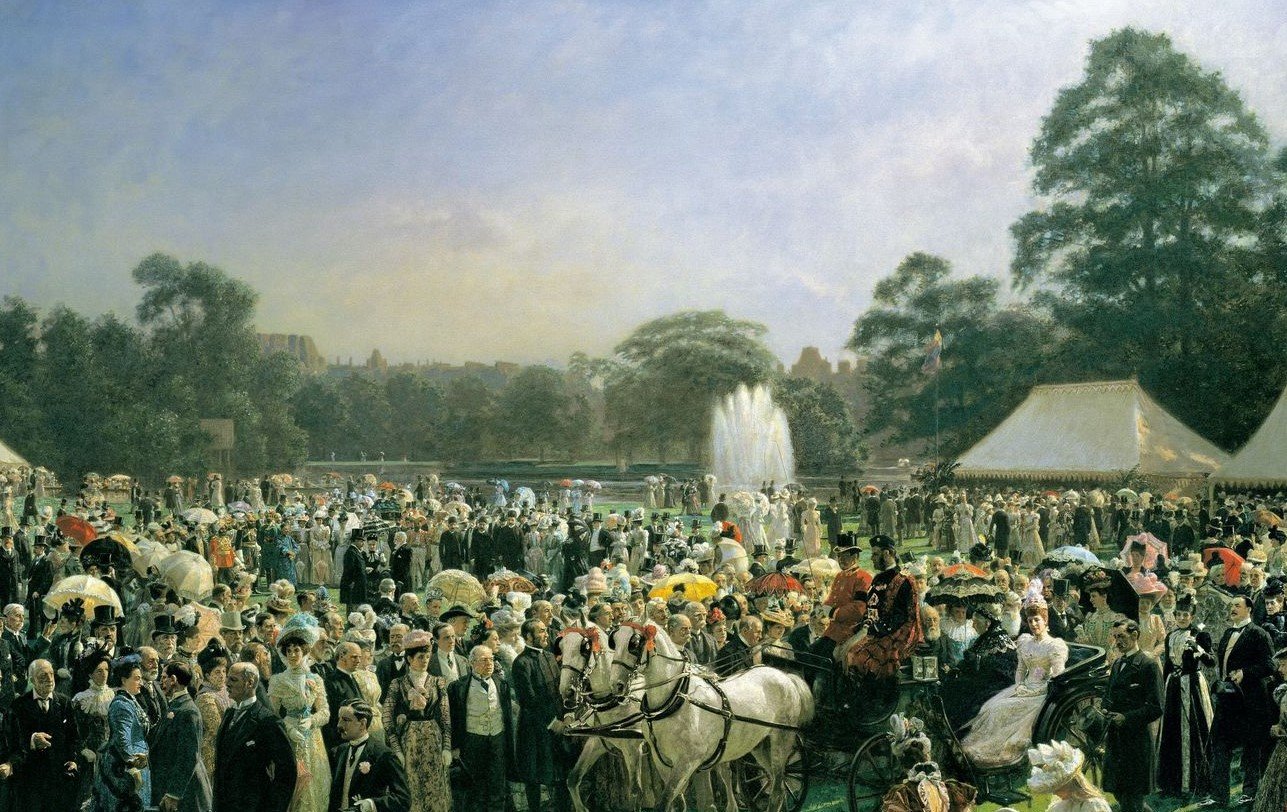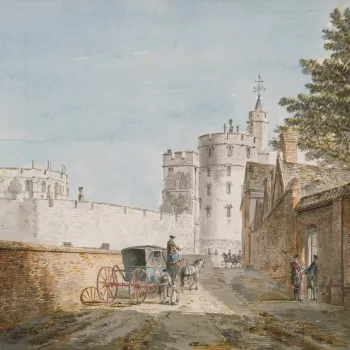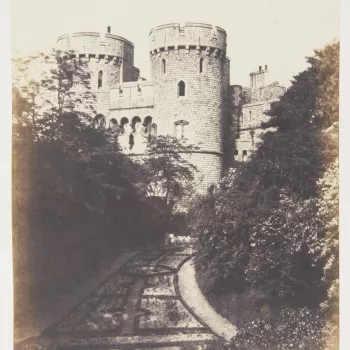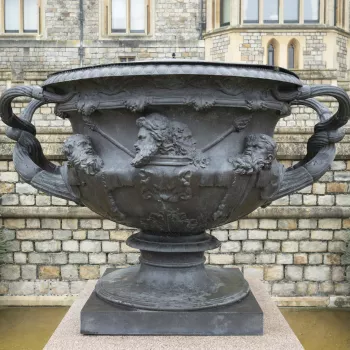
Royal Gardens
Depictions of the gardens at Windsor Castle and other royal residences
Windsor Castle Gardens
The gardens at Windsor Castle have evolved over the centuries to fit the unique castle setting, placed on a chalk escarpment overlooking the River Thames. Today, there are three gardens you may encounter at Windsor, each with its own unique history and style.
The Jubilee Garden, the most recent garden to be created, was established in 2002 to mark Her Majesty The Queen’s Golden Jubilee and can be seen all year round. The Moat Garden has been carved out of the dry moat around the historic Round Tower, an area that has been cultivated since at least the seventeenth century and can be viewed from the Middle Ward. Finally, the East Terrace Garden provides majestic views towards London and the chance to walk the paths of the formal garden that has existed since its creation for George IV in the 1820s. Look out for the garden’s open days, usually weekends during the summer months.
Windsor Castle was first built for William the Conqueror, probably in the 1070s. The inhabitants of the castle would have needed food produced for them and there seems to have been a ’providing’ garden immediately to the south of the castle, known as the ‘King’s Garden’ or ‘King’s Garden plot’ from the early 12th century. The first references to a garden within the castle walls were made in the late 12th century to the ‘King’s herbary’ or herb garden which was within a courtyard inside the King’s apartments in the North range of the Upper Ward. The original purpose of such a garden would be to provide herbs for the King and his family as well as offering a pleasantly scented retreat. After Henry III’s marriage to Eleanor of Provence in 1236, two windows ‘towards the King’s herb garden’ were introduced in the Queen’s private apartments. There is a mention of a further herb garden in the Lower Ward, near to the Great Hall in the first half of the fourteenth century.
A formal garden was laid out for William III below the castle walls to the north (depicted here around 1702 in Leonard Knyff's painting) with trees laid out, before a canal and parterres were added during Queen Anne’s reign. Known as the ‘Maestricht Garden’ it did not survive for long. By the early nineteenth century, food for the castle was provided by kitchen gardens at a number of different locations around Windsor, before the establishment of the Royal Gardens in the Home Park in Queen Victoria’s reign.
Today, the gardens within the castle walls exist as pleasure gardens rather than for cultivating vegetables for the kitchen or herbs for medicine.
Discover the stories behind Windsor Castle's gardens in the Royal Collection by clicking on the sections below.










